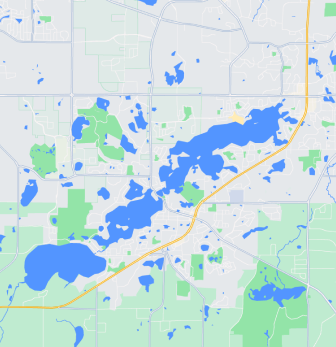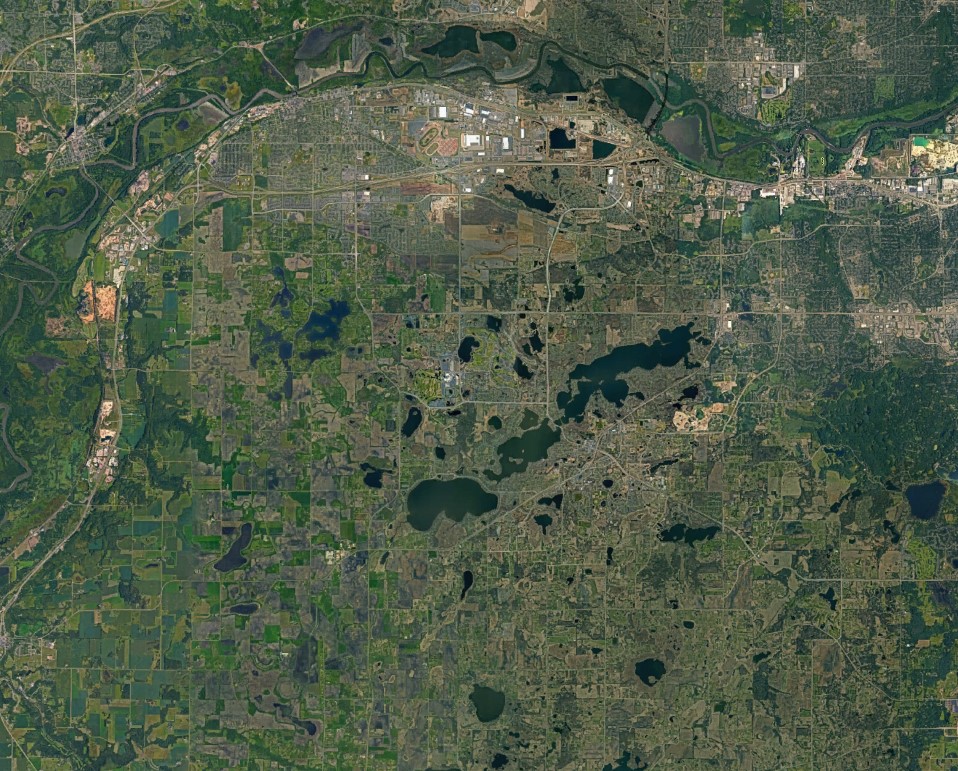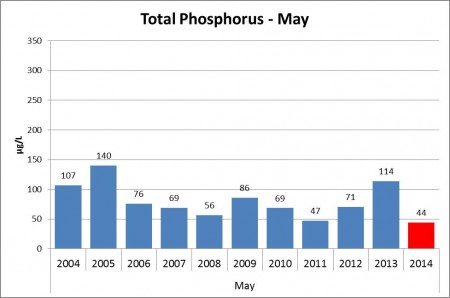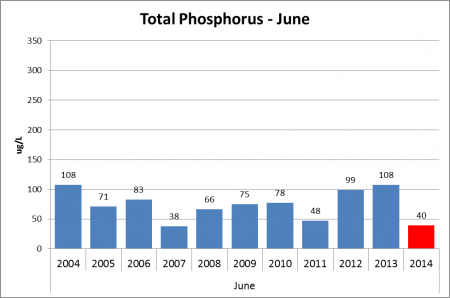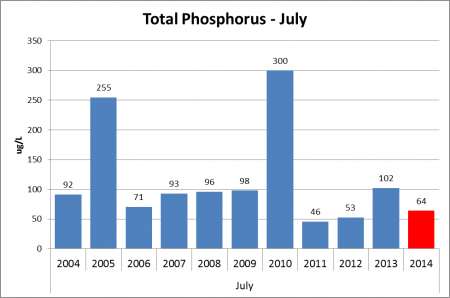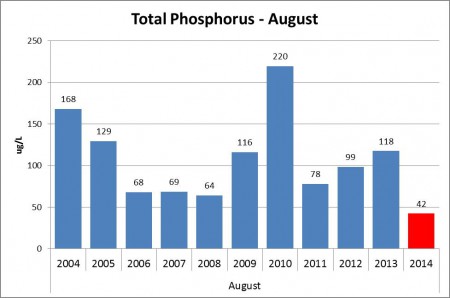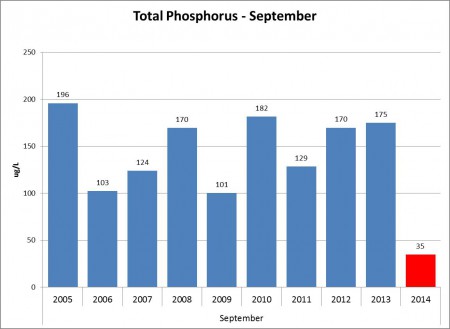Spring Lake Alum Treatment
PLSLWD treated Spring Lake with Aluminum Sulfate (Alum) in 2013, 2018, and 2020.
In 2011, the PLSLWD conducted a Total Maximum Daily Load (TMDL) study of Spring and Upper Prior Lakes. A TMDL study evaluates the maximum amount of a pollutant that a waterbody can receive and still meet state water quality standards. This study found that Spring Lake was impaired, or threatened, by excess phosphorus, and recommended that the phosphorus concentration should be reduced by about 85% in Spring Lake. The study also determined that approximately half of the phosphorus in Spring Lake comes from the surrounding land and streams that drain to the lake, and the other half is released internally from the bottom of Spring Lake.
In order to address the internal phosphorus concentrations, the PLSLWD implemented an alum treatment for Spring Lake. Aluminum Sulfate, or alum, is a nontoxic material that is commonly used in water treatment plants to clarify drinking water. In lakes, alum is used to lower the concentration of phosphorus in the water. The expected lifespan of the potential treatment of Spring Lake has been estimated at 15 to 30 years.
More than one approach is needed to reduce the phosphorus concentrations in Spring Lake. It will take a combination of land, stream, and in-lake practices to meet our water quality goals. By implementing best management practices, like installing raingardens, shoreline buffers, and working with the local community to reduce runoff from lawns and agricultural fields, we all can help lessen outside watershed sources of phosphorus caused by runoff.
What is Alum?
Aluminum Sulfate, commonly referred to as Alum, is a material similar to an antacid that permanently binds to phosphorus, a nutrient that commonly drives algae growth. The goal of any application of alum to a lake, including the proposed application to Spring Lake, is to reduce the amount of phosphorus available to algae and reduce the likelihood of algae blooms.
How does Alum work?
Spring Lake, like many relatively deep lakes in Minnesota, stratifies in the winter and summer. During these times, the bottom of the lake and the surface of the lake have different temperatures, and the bottom loses most of its oxygen (becomes anoxic). Without oxygen around, phosphorus in lake bottom sediments (approximately the first 6 to 10 centimeters) dissolves out of the particles it was attached to and into the water, increasing the concentration of phosphorus in the bottom of the lake. When the lake mixes in the spring and the fall, the high-phosphorus bottom water mixes with the whole lake, and becomes available for algae to use near the surface.
When alum is added, a relatively thin layer of fluffy white material called flocculant or floc is created on the bottom of the lake, and partially mixes with the sediments. This floc binds with phosphorus in a way that does not allow the phosphorus to dissolve into the water when the oxygen is removed. That breaks the cycle, so that when the spring and fall mixing occurs, the bottom water has much less phosphorus in it to drive algae growth.
-
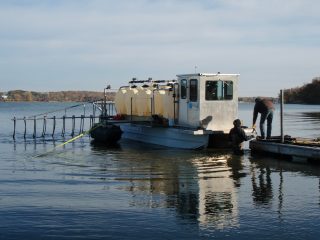
HAB’s crew attaches hoses from the large storage tanks at the Public Access to the barge to fill the drums on the barge.
-
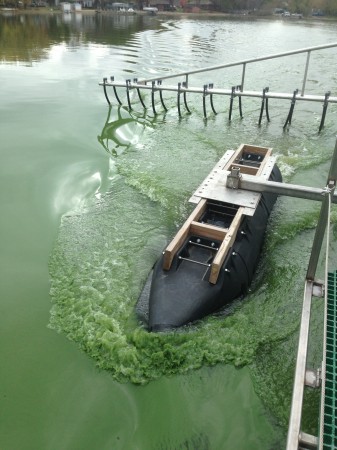
First Day of treatment in November, 2013
-
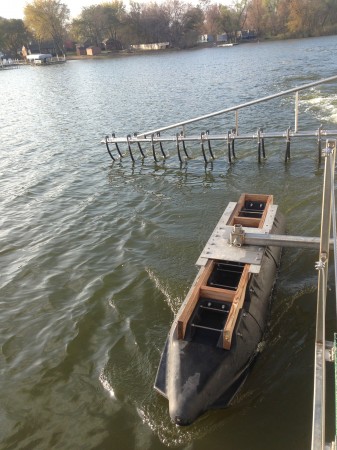
Final day of treatment in November 2013
Sample results after treatment
The graphs below summarize sample results that have been taken since 2004, by the Three Rivers Park District. Two to Three samples are taken each month (during ice-free conditions), and the average monthly concentrations are displayed below (each graph represents one month). The red bar indicates the samples were taken after the Alum Treatment.
Benefits
- Address the phosphorus from the bottom of the lake
- Reduce the average amount of algae in the summer
- Reduce fish kills
Timeline
- 2020: The last dose of the planned series was applied. Further treatments will be assessed based on water monitoring.
- 2018: The Second dose of Alum Treatment was completed
- 2013: First dose of Alum treatment applied
- 2011: PLSLWD conducted a Total Maximum Daily Load (TMDL) study of Spring and Upper Prior Lakes.
Related Documents
Partners
- HAB Aquatic Solutions, Inc

